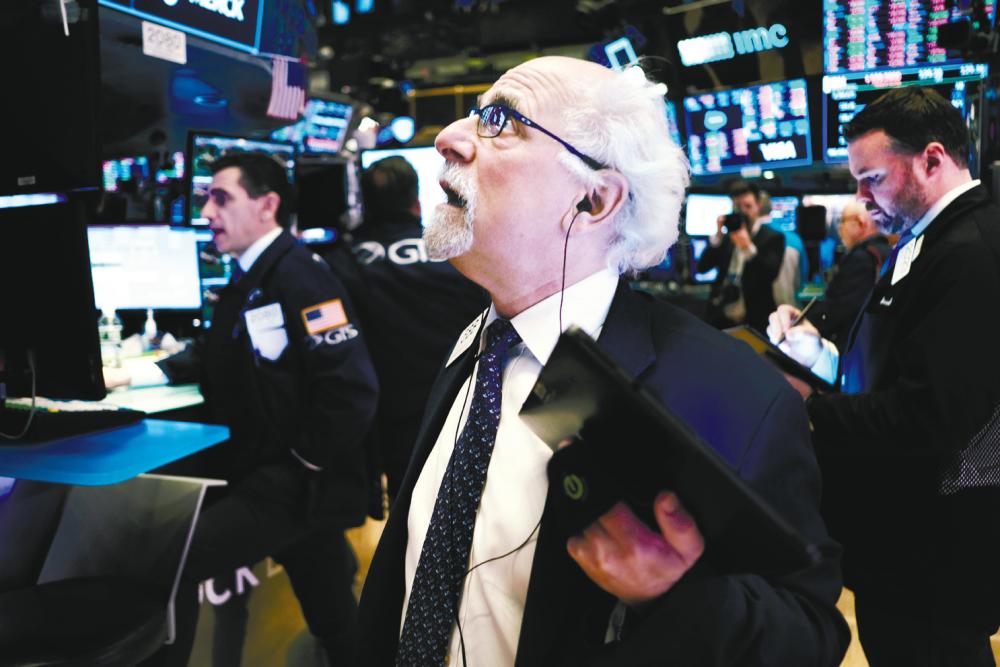AS Covid-19 threatens to become a pandemic, major stock markets suffered their worst performance since the 2008 financial crush.
Growth disruption
The OECD has warned the outbreak could halve global economic growth this year to 1.5%, the slowest rate since 2009. It has cut its 2020 growth forecast for China to a 30-year low of 4.9%, down from 5.7% in November.
The IMF downgraded its growth forecast for China to 5.6% in 2020, its lowest since 1990. Economists polled by Reuters from Feb 7 to 13 expected China’s economic growth to slump to 4.5% in the first quarter, down from 6% in the previous quarter, the slowest since the financial crisis.
China’s manufacturing sector tumbled in February, as many factories remain closed. The Manufacturing Purchasing Managers Index plunged to a record low in February reflecting the sharp contraction.
The World Trade Organisation head expects the epidemic to slow the global economy, as China accounts for 19.1% of global GDP using purchasing power parity, or 17% at current exchange rates, 13% of global trade, and 28% of global manufacturing output in 2018.
Impact on developing economies
Developing countries are vulnerable. The impact is expected to be more severe for the 21 African countries the IMF sees as “resource-intensive”, where growth had already slowed to about 2.5%. Trade between Africa and China grew 2.2% in 2019 to US$208.7 billion, compared with a 20% rise in 2018.
Even Latin America counts China as its largest overall trade partner. The key downside risk is further deterioration of the commodity terms of trade. The most exposed are Chile, Peru and Brazil.
Asian developing countries linked to China through supply chains, raw material exports, investment and tourism are vulnerable.
Global supply chain disruptions
The virtual shutdown of the “factory of the world” has slowed the supply of products and parts, disrupting production the world over. Apple’s manufacturing partner in China, Foxconn, is facing production delays, while a Lombardy electronics factory was shut down by the Italian authorities due to an outbreak.
Some carmakers have temporarily closed factories outside China due to parts supply shortages. European manufacturing could suffer considerably due to its extensive links with China through supply chains. Already, four of the world’s biggest carmakers are expected to shut down European production.
Meanwhile, 94% of Fortune 1000 companies are facing supply chain disruptions. Even the pharmaceutical industry is expected to face disruption.
For the Harvard Business Review, “the worst is yet to come”, expecting the impact on global supply chains to peak in mid-March, “forcing thousands of companies to throttle down or temporarily shut assembly and manufacturing plants in the US and Europe”.
Commodity prices plunge
Prices for commodities plunged in February as Chinese companies cancelled orders, dragging down prices.
The Wall Street Journal reports one of the worst routs in commodity prices in years due to the outbreak.
With the outbreak spreading to more countries, the oil price has been dropping precipitously as global demand weakens further. US and Brent crude benchmark prices fell 16% and 14% respectively during the past week, to its lowest levels since July 2017.
Iron ore prices dropped to US$81.35 per tonne during the first week of February from around US$90 throughout January.
Perfect storm?
Years of spending cuts due to fiscal austerity policies have undermined public health provisioning, not only in developing countries, but also in developed economies.
Countries are bracing for economic fallouts from the outbreak, but have limited policy space after eschewing sustained fiscal recovery efforts following the 2008-2009 financial crisis.
Instead, monetary policies, including unconventional ones, with historically low interest rates and central bank balance sheets, are still being relied upon.
China’s central bank cut the country’s benchmark lending rate in February. The US Federal Reserve further loosened monetary policy, with others following. While rate cuts may temporarily boost financial market indicators, they are unlikely to be of much help.
Despite rejecting sustained fiscal efforts to revive economic growth in favour of austerity for a decade, debt levels continued to rise as revenue declined due to tax breaks. Scope for a “big boost” fiscal package is limited by public perceptions of the record global debt level – estimated at US$253 trillion, more than three times global GDP.
Although the economic consequences require a global response, multilateralism is in disarray. As if to underscore its growing irrelevance, the G20 missed an important opportunity to provide leadership at its Feb 22-23 finance ministers’ meeting in Riyadh. – IPS













